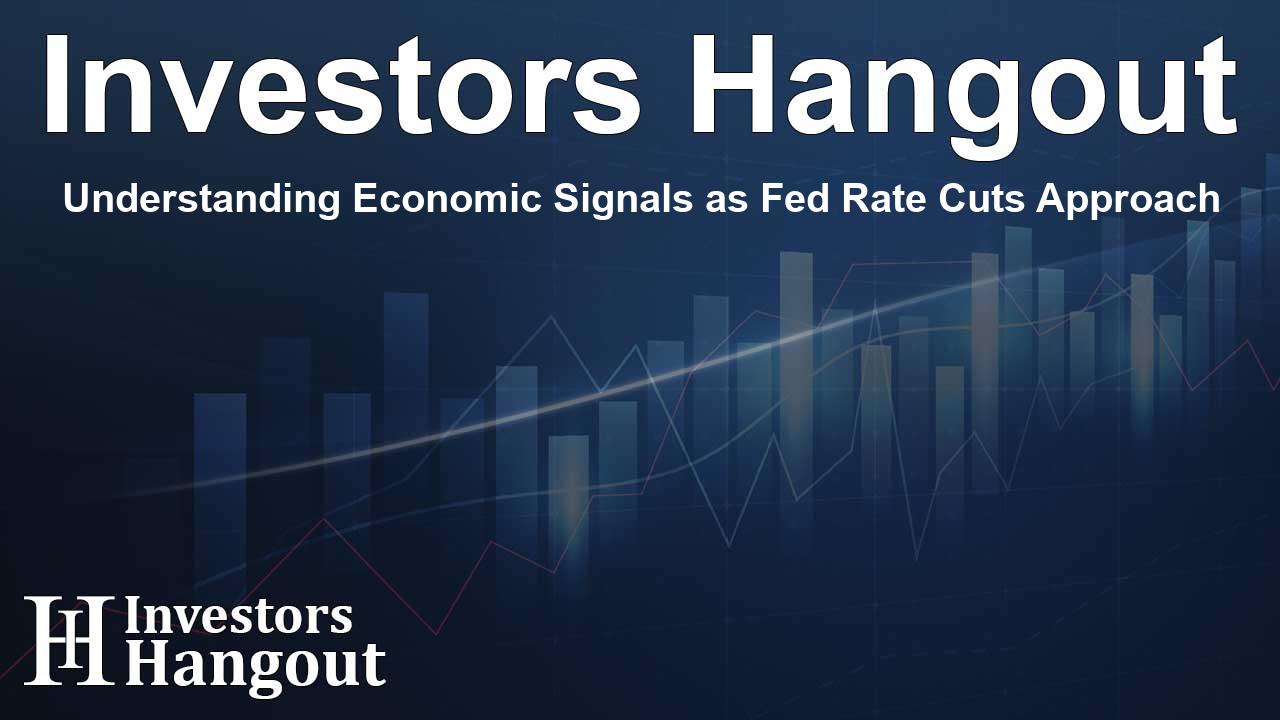Understanding Economic Signals as Fed Rate Cuts Approach

The Impending Rate Cuts and Their Potential Impact
The Federal Reserve is poised to begin a series of rate cuts that could reshape the landscape of financial markets. Investors and analysts alike are closely watching the state of the U.S. economy as this pivotal moment approaches. With borrowing costs at their highest in almost two decades, the objective of these cuts is to stimulate economic activity, which could improve stock market performance.
Economic Health: A Key Determinant
How the economy behaves during this period will likely dictate the outcomes for stocks, bonds, and even the dollar. Current market indicators suggest that the Fed may implement approximately 250 basis points of easing by late 2025. However, a pressing concern is whether such measures will be timely enough to avert a looming economic slowdown.
Market Reactions to Rate Cuts
History provides some insight into how markets may react in the wake of rate changes. For instance, data indicates that the S&P 500 index typically experiences a decline when cuts are initiated amid economic recession. Conversely, when these cuts occur during periods of economic growth, significant gains can be anticipated, highlighting the importance of economic context.
Past Trends and Future Expectations
A historical analysis suggests that following initial cuts during recessionary periods, the S&P 500 has dropped nearly 12% on average within a year. In a non-recession environment, however, data indicates an average gain of around 13%. Thus, the crux of this analysis focuses on whether the economy can evade recessionary pressure.
Sector Performance and Investment Strategies
Investors often turn their attention to various sectors when anticipating market responses to changes in monetary policy. Consumer staples and discretionary sectors have demonstrated superior performance, each rising about 14% on average following rate cuts. Health care and technology sectors have also shown resilience, garnering attention for their potential in an evolving market landscape.
Observing Small Cap Stocks
Small-cap stocks, which are perceived to be more sensitive to economic fluctuations, tend to outperform during economic recoveries. Recent market patterns indicate that such stocks, represented by indices like the Russell 2000, may see growth in the year following a rate cut, making them an attractive consideration for investors.
The Role of Treasuries and Bond Markets
As the Fed signals a shift toward easing, Treasuries have already seen a notable rally. Investors generally flock to U.S. government bonds during times of uncertainty, elevating their status as safe-haven assets. Given the market’s reaction to previous rate cuts, Treasuries are expected to remain popular, although some analysts caution that gains may be limited without a sharper economic downturn.
Analyzing Treasury Yields
Typically, when the Fed cuts rates, Treasury yields decrease, which bolsters bond prices. Historical data suggests that the 10-year Treasury yield has seen fluctuations post-rate cuts, often reflecting investor sentiment regarding economic recovery. These trends reinforce the need for investors to monitor economic indicators closely during these strategic policy changes.
The Dollar's Reaction to Rate Changes
Another critical aspect to consider is the U.S. dollar's performance as these rate changes unfold. The dollar often reacts inversely to Federal Reserve rate cuts; deeper cuts can diminish the currency’s attractiveness to yield-seeking investors. However, a more stable economic backdrop could help bolster the dollar's position against other currencies.
International Context of U.S. Rate Cuts
The actions of other central banks can significantly influence dollar performance, especially during periods of coordinated rate changes. As the European Central Bank and others begin their rate cuts, the comparative strength of the dollar becomes a crucial factor for investors assessing international market dynamics.
Looking Ahead: Key Takeaways for Investors
As investors prepare for the Fed’s impending actions, understanding the economic signals surrounding these rate cuts will be crucial. Whether the economy can sustain growth amidst tightening monetary policy will ultimately dictate market trajectories. The upcoming months will be pivotal in determining investment strategies across various sectors, with a focus on adaptive measures that account for economic fluctuations and market reactions.
Frequently Asked Questions
What are rate cuts and why are they significant?
Rate cuts refer to the reduction of interest rates by central banks, intended to stimulate economic activity by making borrowing cheaper.
How might rate cuts affect the stock market?
While rate cuts can lead to increased stock prices by allowing businesses to borrow at lower costs, their effectiveness often depends on the overall health of the economy.
What sectors typically perform well during rate cuts?
Consumer staples and discretionary sectors often outperform during rate-cut cycles, along with small-cap stocks that are sensitive to economic recovery signals.
How do Treasuries react to Fed rate cuts?
Treasuries often experience price increases during rate cuts since they are considered safe-haven investments in uncertain economic climates.
What is the impact of other central banks cutting rates alongside the Fed?
Coordinated rate cuts by the Fed and other central banks can influence the U.S. dollar’s performance and its attractiveness to global investors.
About The Author
Contact Henry Turner privately here. Or send an email with ATTN: Henry Turner as the subject to contact@investorshangout.com.
About Investors Hangout
Investors Hangout is a leading online stock forum for financial discussion and learning, offering a wide range of free tools and resources. It draws in traders of all levels, who exchange market knowledge, investigate trading tactics, and keep an eye on industry developments in real time. Featuring financial articles, stock message boards, quotes, charts, company profiles, and live news updates. Through cooperative learning and a wealth of informational resources, it helps users from novices creating their first portfolios to experts honing their techniques. Join Investors Hangout today: https://investorshangout.com/
The content of this article is based on factual, publicly available information and does not represent legal, financial, or investment advice. Investors Hangout does not offer financial advice, and the author is not a licensed financial advisor. Consult a qualified advisor before making any financial or investment decisions based on this article. This article should not be considered advice to purchase, sell, or hold any securities or other investments. If any of the material provided here is inaccurate, please contact us for corrections.
